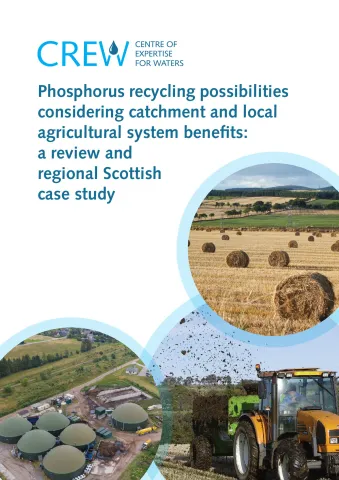This project was developed to downscale aspects of Scotland’s country-scale phosphorus (P) mass balance by looking at potential for regional recycling. The research firstly examined the background context of P sustainability in terms of recycled P sources, usage opportunities and constraints via a literature review. Secondly a case study, with a waterbody to regional basis, was developed to examine coupling that region’s P-rich resources from wastes with the local agricultural land for goals to both offset the raw imported resource of chemical phosphate fertiliser and limit P pollution of waters. Factors such as material availability, compositions, costs and transport were examined alongside the spatial distribution of agricultural land, crop usage constraints and basic environmental pollution risks.
Initial case study selection of a waterbody with P water quality failure led to examining a rural catchment bordering a city with extensive availability of current and potential recyclable P in excess of the catchment farmland. The inventories of available materials within municipal wastewater and commercial digestate sectors were complex to assemble. To effectively utilise the recycled P masses materials as fertiliser replacement not exceeding crop requirements it was necessary to go beyond the catchment bounds to a larger region of increased planning complexity (in terms of road transport distances, multiple planning boundaries). Simplifications were necessary in the assessment of swapping environmental risks between chemical and recycled P fertiliser forms, since practical tools and models are not yet available across diverse material compositions, soil and crop management combinations.
| Attachment | Size |
|---|---|
| CRW2017_04 Main Report | 6.52 MB |
| CRW2017_04 Summary Report | 1.95 MB |
